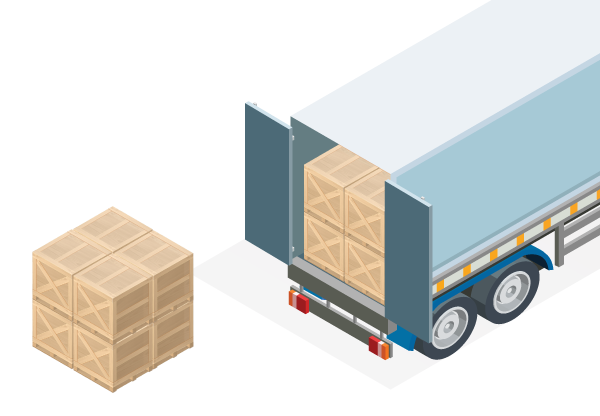Freight carriers are practical and conservative when it comes to the space freight shipments take in their trucks. To prevent shippers from overly protecting their cargo and taking up more space than necessary, carriers have developed some pricing techniques that promote finding the golden middle point of safety and space management.
Dimensional Weight
The main strategy designed to avoid taking up too much space is dimensional weight (or dim weight).
That means that your shipment’s weight will be calculated based on a specific formula: by multiplying the length, width, and height of your shipment.
If you are shipping a skid of 48” x 48” x 48” you may get some incredibly high numbers by simply multiplying the numbers (over 110,000 in this case). This will not be your chargeable weight.
Some carriers simply disregard the dimensional weight if it’s over 1100 while others divide the number by 139. For a standard shipment with the dimensions listed above, this would bring your dim weight to around 796.
The carrier will charge for whichever weight is greater, be it the actual weight or the dim weight. For example, if your shipment (with the dimensions listed above) weighed 500 lbs, it would be treated as weighing 796 lbs instead.
For this reason, although you want to make sure your shipment is as safe as possible, you also want to make sure it’s as dense as possible. Carriers do not like transporting air if they don’t have to.
Making sure your pallets are stackable or in other words, making sure that something can be placed on top of them is another good way to conserve space in trucks and make sure you get the best possible pricing.
Linear Feet
This is where linear feet come into play.
The linear feet of your cargo represent the length that your shipment takes up in the truck. The standard length of a freight truck trailer is 53’.
The standard width of a trailer is 96 inches. This means that two standard skids of 48” x 48” x 48” can be placed one next to the other in a truck, taking up only 48” of linear feet.
However, if you’re shipping two slightly larger skids, for instance, 53” x 53” x 78”, then those two skids will not fit in the truck one next to each other. That means that your shipment would take up 106” of linear space.
The standard height of a trailer is 96 inches. This is important because it gives you some wiggle room if your shipment is stackable (meaning that it can be placed on top or under other cargo).
For instance, if you are shipping five standard pallets of 48” x 48” x 48”, they will take up 96” of linear space.
Four pieces can be stacked one on top of the other, taking up 48” of space. The last skid being the odd one out will have to be placed “behind” the others. If the 5th skid is stackable, this will still allow you to get better pricing as another shipper’s order can still be placed on top of yours.
Axial (Axle) Weight
Lastly, when it comes to space conservation in trucks, we need to talk about axial (axle) weight.
Axle weight represents the amount of weight a single truck axle can support. That means that your shipment can be considered as taking up more space than it actually does if it is overly heavy.
For instance, if you are shipping one pallet that is very dense, weighing 5000 or 6000 lbs, your shipment will severely limit the amount of additional cargo that the carrier can put in that part of the truck.
This does not mean that you should separate every shipment into 5 skids. As noted above, some carriers will respond to this by charging based on dimensional weight.
However, if your shipment is overly heavy, you do want to try and spread out the weight as much as possible or separate it into a few lighter skids.

